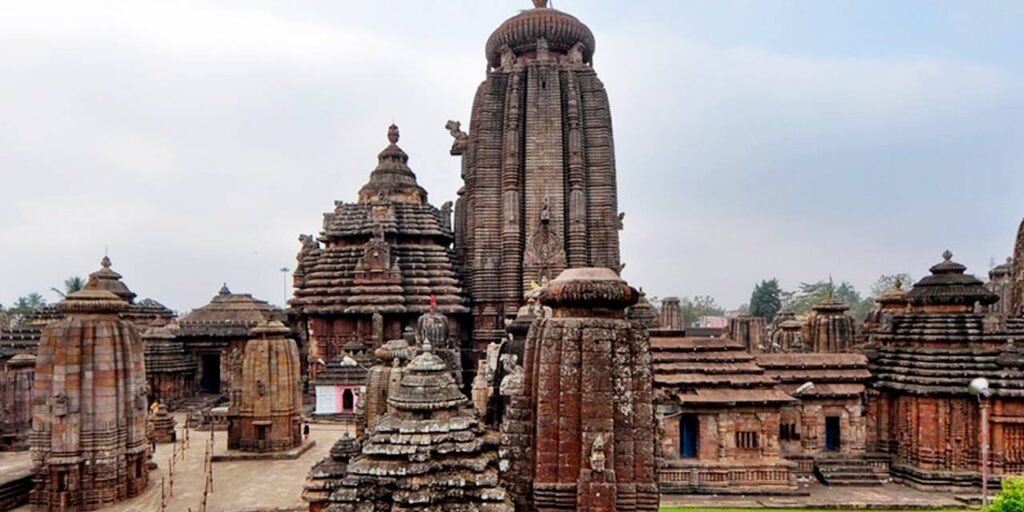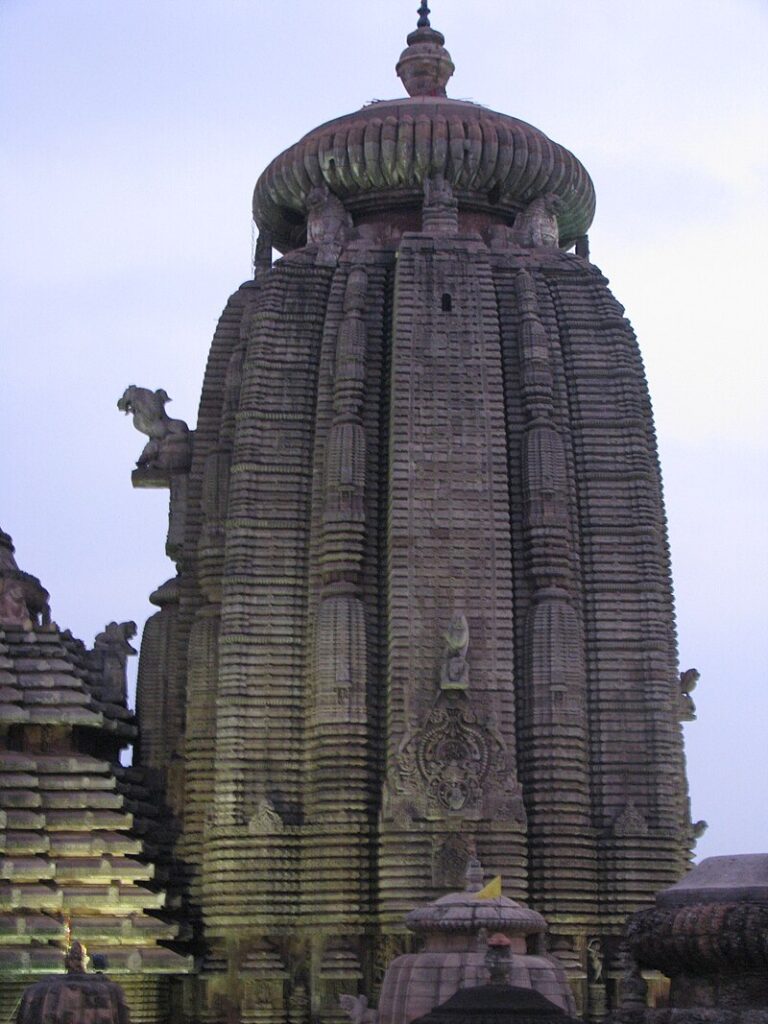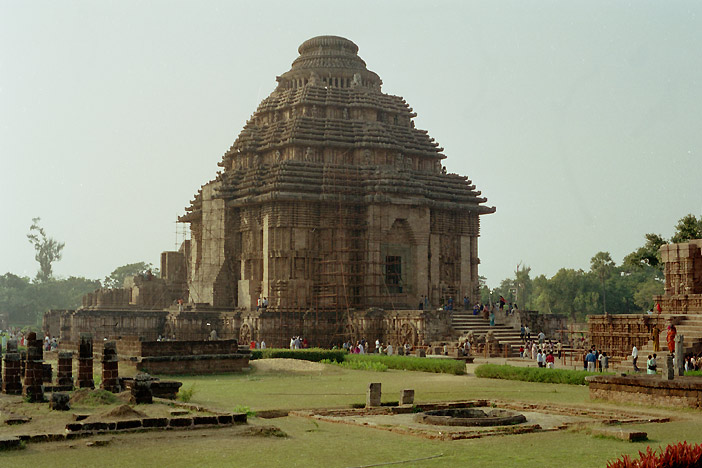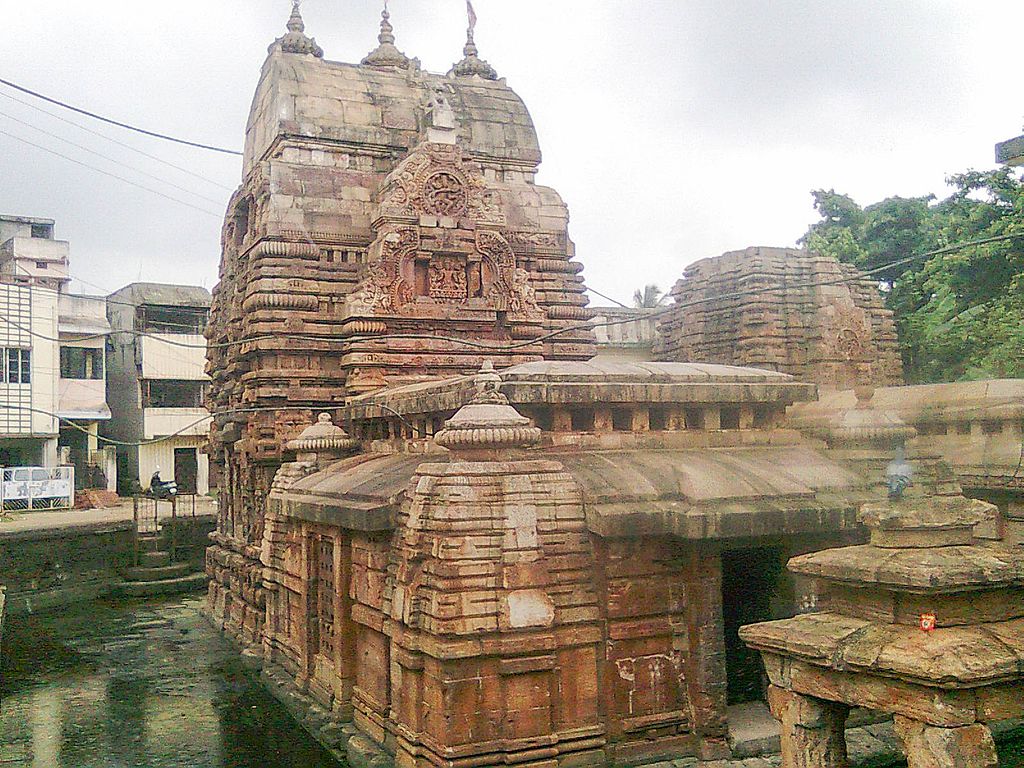
Introduction
The Deula style of temple architecture, which is predominantly found in the ancient region of Kalinga, which is modern-day Odisha, It is a distinctive subset of the Nagara style of Hindu temple architecture. The Deula temples are characterized by their unique tower structures; the Deula style has evolved into three primary forms: Rekha, Pidha, and Khakhara. While Odisha boasts the most iconic examples of this architectural tradition, its influence extended to eastern India, notably shaping the towering legacy of temples in Bengal. This article explores the defining features of these three Deula types and highlights the unique adaptations seen in Bengal’s Deula temples.
Origins and Evolution of Deula Style
Indian temple architecture, which dates back to the Gupta Empire (4th-6th century CE) or even before, evolved into diverse regional styles, with the Nagara style dominating northern India and the Dravida style prevalent in the south. The Kalinga, or Deula, style, a prominent school under the Nagara tradition, flourished in the ancient kingdom of Kalinga, which encompasses present-day Odisha, parts of West Bengal, and northern Andhra Pradesh. This architectural style is distinguishable by its emphasis on two main structures: the deula (tower) and the jagamohana (hall).
The evolution of the Deula style in Odisha was significantly influenced by the powerful dynasties such as the Somavamsis and the Eastern Ganges. The Somavamsi Period (circa 950-975 CE) saw the development of key architectural features, with the Mukeshwar Temple often considered an early masterpiece, showcasing a fully developed deula and jagamohana. Then came the Eastern Ganges, who further refined the style, culminating in monumental structures like the Lingaraja Temple and the Jagannath Temple, which demonstrate increased complexity and grandeur. This distinct architectural style subsequently spread to the eastward region, influencing temple construction in parts of Bengal.
Typology of Deula Architecture
The Kalinga style architecture broadly classifies temples into three distinct types: Rekha Deula, Pidha Deula, and Khakhara Deula.
a. Rekha Deula

The Rekha Deul, meaning “the straight line” in the Odia language, is characterized by its tall, curvilinear tower, or shikhara, that rises directly above the garbhagriha (sanctum sanctorum). The spire gradually tapers upwards, often resembling a sugarloaf, and is typically adorned with intricate carvings and sculptural details. For example, the Lingaraja Temple in Bhubaneswar, standing at approximately 180 feet, is a quintessential example of Rekha Deula architecture, renowned for its towering shikhara and elaborate ornamentation. Another example is that of the Mukteshwar Temple in Bhubaneswar, a smaller yet exquisitely ornamented 10th-century Shiva temple, which also features a Rekha-style vimana with a distinctive arched gateway, showcasing refined craftsmanship.
b. Pidha Deula

The Pidha Deula features a tiered, pyramidal roof structure, where each succeeding tier diminishes in size as it ascends. These structures commonly serve as assembly halls (jagamohana), dance halls (natamandira), or halls of offerings (bhogamandapa) in front of the main Rekha Deula sanctuary structure. The assembly hall of the Konark Sun Temple is a prime example of a Pidha Deula, while the Lingaraja Temple and Jagannath Temple complex also incorporate Pidha Deulas as their associated halls.
c. Khakhara Deula

Distinct from the other two types, the khakhara Deula is identifiable by its rectangular plan and a barrel-vaulted roof, often resembling a gourd (khakharu) or the gopurams of South Indian Dravidian architecture. These temples are typically associated with the worship of feminine deities, or Shakti, such as the mother goddesses Chamunda or Durga. The 8th-century Baitala Deula in Bhubaneswar is a prominent and striking example of the Khakhara style, notable for its semi-cylindrical roof and its strong association with tantric practices, featuring eerie carvings of the Mother Goddess Chamunda.
Transition of Deula Style to Bengal
During the Medieval Period, the Deula style, particularly the Rekha form, migrated from Odisha into Bengal. This transition necessitated significant adaptations due to local availability of materials and prevailing architectural practices. Unlike Odisha, where temples were primarily constructed from stone, Bengal’s alluvial plains had a scarcity of stone, leading to the widespread adoption of brick as the primary building material. This shift to brick, while retaining the verticality and basic curvilinear form of the Rekha Deula, often resulted in simpler ornamentation, relying on terracotta or stucco instead of intricate stone carvings.
Focus on Bengal Deuls (Single Tower Temples)
In Bengal the Deula temples stand as a unique and compelling chapter in Indian temple architecture, representing a distinct regional adaptation of the Kalinga style. While retaining the fundamental curvilinear tower form, these temples evolved with local materials and aesthetics, showcasing ingenuity in brick construction and a charming simplicity in ornamentation. They are often found as solitary, towering structures, diverging from the multi-component temple complexes found in Odisha.
Architectural Features
In Bengal the Deula temples are predominantly characterized by their tall, slender, elongated, and curvilinear towers, also called Shikharas, rising directly over the garbhagriha (single sanctum). Unlike the elaborate stone carvings of their odishan counterparts, these temples have been primarily constructed from brick, a material abundant in Bengal’s alluvial plains. This shift in materials led to a different approach to ornamentation, relying heavily on intricate cut-brickwork, terracotta panels, and stucco for decorative effect. While much of the original ornamentation has faded over time, surviving traces reveal floral motifs, geometric patterns, and sometimes human or mythological sculptures.
A distinctive feature has often been observed is the entrance to the sanctum, which is frequently constructed with tapering, overlapping bricks, creating a unique corbelled arch or an inverted V-shaped aperture. The sanctum itself is sometimes situated below ground level, adding to the temple’s unique structural and spiritual ambiance. While the lower portions of these temples might appear plainer, the shikharas often display remnants of elaborate brick ornamentation. The crowning elements, such as the amalaka (a large, ribbed, stone disc) and kalasa (pot-shaped finial), are integral to the Rekha Deul form, though they are often damaged or missing in many surviving Bengal examples due to the passage of time and material fragility. The vertical projections, or rathas, typical of Nagara style, are also present, often appearing as slender engaged pilasters with horizontal mouldings, showcasing a blend of traditional form with local construction techniques.
Notable Examples
Examples of several prominent Deula style temple architecture across Bengal are as follows:
Ichhai Ghosher Deul, Gourangapur (Paschim Bardhaman): This imposing brick-built Rekha Deul, located near the Ajay River, is one of the most curious and significant examples in Bengal. While its precise construction date is debated (ranging from the 7th-11th century to the 16th-18th century CE), it is traditionally attributed to the local Sadgop ruler Ichhai Ghosh, or possibly built by his descendants in honor of his memory. The temple stands isolated, soaring to approximately 18 meters (59 feet) in height, on a nearly square base. Its interior sanctum is located below ground level, accessed through a corbelled arch. Though much of its original ornamentation, depicting mythological scenes and motifs in intricately carved terracotta panels, has faded, traces remain on the curvilinear spire, making it a testament to Bengal’s brick and terracotta artistry.
Banda DeulPurulia: An 11th-century structure, the Banda Deul in Purulia district is notable for being one of the rare stone-built Rekha Deuls in Bengal, an exception to the prevalent brick construction. It is constructed in sandstone, featuring a soaring curvilinear tower over a square sanctum and following a triratha plan (three vertical projections on its outer walls). It is believed to have originally been a Digambar Jain temple before its conversion to Shaivism, its exterior walls retain delicate scrollwork, creepers, and stylized chaitya window designs. Although its mandapa has largely collapsed, eight pillars still stand, hinting at a once more extensive complex. An interesting architectural detail is a makara-headed water outlet on the eastern wall, designed to drain ritual water from the sanctum.
Jatar Deul, South 24 Parganas: Situated amidst the landscape of the southern Sundarbans, the Jatar Deul is an 11th-century (or possibly 10th-11th century) brick temple dedicated to Lord Shiva, standing at approximately 98 feet (30 meters) high. Its Kalingan style is striking, particularly given its location in Bengal. A copper plate discovered near the temple in 1875, though now untraceable, suggested its construction by Raja Joychandra in 975 AD. The temple features an arched gateway leading to a sanctum located below ground level. While the walls were once intricately decorated with bricks, much of this has been lost due to time and past reconstruction efforts. The temple’s isolated setting and the mystery surrounding its origins and purpose add to its allure.
Bahulara ancient Temple (Siddheshwara Temple), Bankura: Built in the 10th-11th century Siddheshwara Temple at Bahulara is a masterpiece of brick architecture. Standing at 19.2 meters (63 feet) on a high platform, this west-facing temple is renowned for its exquisite cut-brick and lime-stucco ornamentation on its exterior walls, showcasing a strong affinity with Odishan temples in its decoration and design. The presence of images of Lord Ganesha, Mother Goddess Mahishasuramardini, and a Jain Tirthankara Parsvanatha alongside the central Shiva Lingam suggests a complex religious history, possibly beginning as a Jain or Buddhist shrine before its reconsecration to Shaivism.
Sat Deul, Purba Bardhaman: This 10th-11th century brick-built temple in Purba Bardhaman district is another significant example of a Rekha Deul in Bengal. Built in the Odishan Rekha Deul style with a towering curvilinear form, its exterior walls once featured elaborate brickwork decorations, including geometric figures and floral motifs, though much has been lost. Like Bahulara, its entrance to the sanctum uses tapering overlapping bricks, creating an inverted V-shape. The name “Sat Deul” literally means “seven temples,” suggesting it might be the sole survivor of a larger complex.
Comparitive Table: Odisha vs Bengal Deula
| Feature | Odisha | Bengal |
| Primary Material | Predominantly stone (e.g., sandstone, laterite), allowing for large-scale, robust structures. | Almost exclusively brick, due to the scarcity of stone in the alluvial plains. This necessitated different construction techniques and ornamentation. |
| Overall Size & Complexity | Generally grander, forming part of expansive temple complexes with multiple axially aligned halls (Jagamohana, Natamandapa, Bhogamandapa) that complement the main Rekha Deula. | Typically smaller in scale and simpler in layout, often standing as solitary single-tower temples without elaborate attached halls |
| Ornamentation | Characterized by intricate and highly detailed stone carvings and sculptures, depicting a vast pantheon of deities, mythological narratives, and decorative motifs. | Relies on terracotta panels, cut-brickwork, and stucco for decoration. While sophisticated, it often presents a simpler aesthetic compared to the dense stone carvings of Odisha.Much has also eroded over time. |
| Associated Halls (Mandapas) | Multiple associated halls like Jagamohana (assembly hall), Natamandapa (dance hall), and Bhogamandapa (offering hall) are integral components, forming a complete temple complex. | Usually none or a much simpler, often dilapidated, mandapa or porch is present. The focus is primarily on the single towering Vimana. |
| Examples | Lingaraja Temple, Mukteshwar Temple, Jagannath Temple. | Ichhai Ghosher Deul, Jatar Deul, Bahulara Siddheshwara Temple, Banda Deul (unique stone example), Sat Deul. |
Cultural and Religious Significance
The Deula Style both in Odisha and Bengal, hold a profound cultural and religious significance. In Odisha, they are central to Shaiva (Lingaraja Temple, Mukteshwar Temple) and Shakta (Baitala Deula) worship, often embodying complex iconographies and tantric traditions. The Lingaraja Temple, for instance, worships Lord Shiva as Harihara, a combined form of Lord Vishnu and Lord Shiva, reflecting syncretic religious practices. Local myths and folklore are often intertwined with these sacred sites, contributing to their spiritual aura.
In Bengal while many of these Rekha Deuls are dedicated to Lord Shiva (Jatar Deul, Bahulara Siddheshwara Temple, Ichhai Ghosher Deul), some have complex histories suggesting original affiliations with Jainism or Buddhism before being reconsecrated to Hindu deities. These temples served not only as places of worship but also as vital cultural hubs, anchoring community life and preserving regional traditions.
Preservation and challenges
Many of Bengals, Deula style temples, including Jatar Deul, Ichhai Ghosher Deul, Bahulara Ancient Temple, Banda Deul, and Sat Deul, are recognized as Monuments of National Importance by the Archaeological Survey of India (ASI). Despite this protected status, these ancient structures face various threats. Being primarily brick-built, they are more susceptible to erosion from weather, damage from encroaching vegetation, and the general ravages of time. Historical accounts mention damage from treasure hunters at sites like Jatar Deul. The fading of intricate ornamentation is also a concern. Effective preservation necessitates continuous conservation efforts, public awareness campaigns, and engagement to ensure these architectural treasures endure for future generations.
Conclusion
In Conclusion The Deula style of temple architecture, with its distinct Rekha, Pidha, and Khakhara forms, represents a significant chapter in India’s rich architectural history. While its origins lie in Odisha, its journey into Bengal produced a unique legacy of towering Rekha Deuls. These brick-built temples, though often simpler in ornamentation than their stone counterparts in Odisha, retain the fundamental verticality and spiritual symbolism of the style. Bengal’s understated yet rich Rekha Deul heritage underscores the importance of understanding regional adaptations within broader architectural traditions. Further research and dedicated conservation efforts are crucial to preserving these magnificent structures and ensuring their recognition as vital components of India’s cultural tapestry.

Jyotirmoy Dutta is a 19-year-old student at Thadomal Shahani Engineering College under Mumbai University, pursuing a degree in Artificial Intelligence and Data Science. Passionate about history, architecture, and archaeology, he is also passionate about researching the intricate details of ancient and medieval Indian temples. His deep fascination with sculptural art extends beyond research, as he actively engages in creating sculptures, blending tradition with artistic expression.
